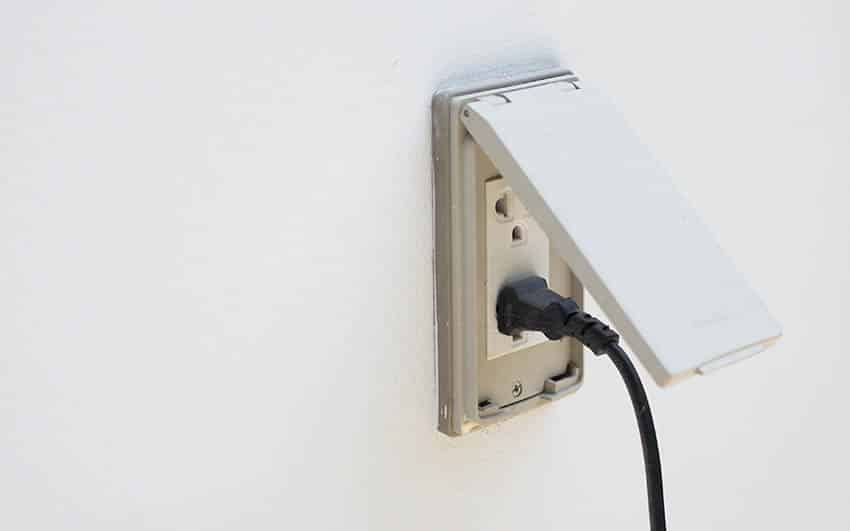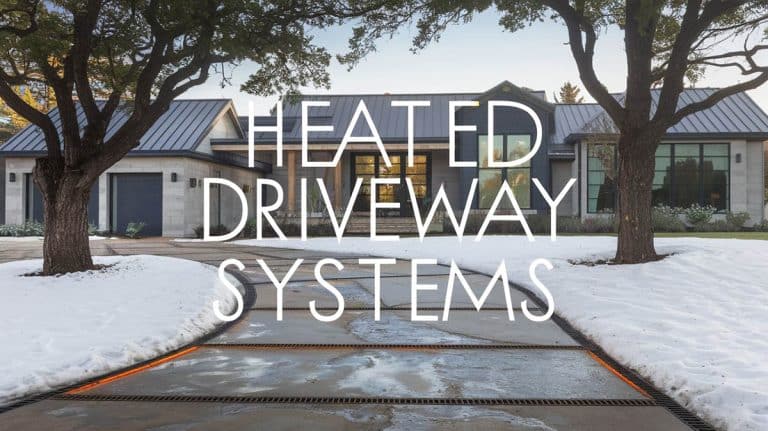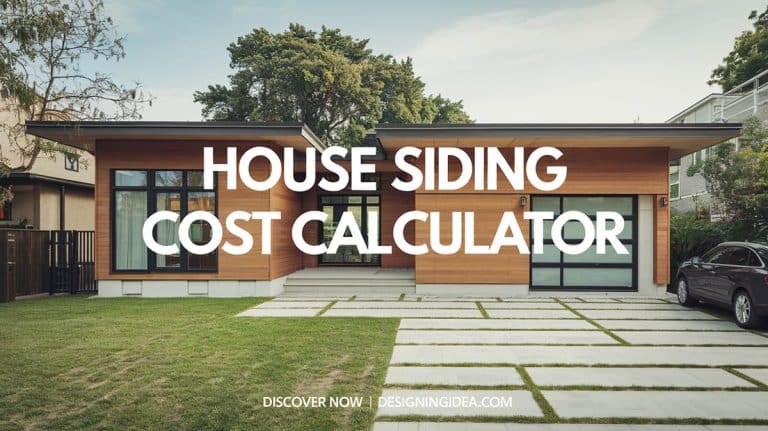How To Weatherize Your Home: 20 Weatherproofing Tips

Here are the best tips on how to weatherize your home including weatherproofing steps you can take to protect from cold winter months and hot summer months. Weatherization is a whole-house, comprehensive method of energy conservation. It comprises insulation in important places such as the attic, flooring, and sidewalls. It also involves sealing the home’s perimeter as well as treating air infiltration with modern diagnostics such as blower-door innovation to facilitate the operation. It can help homes save up to 30% on their energy expenses.
Weatherized homes provide greater comfort and allow family members to receive high-quality rest and sleep. Weatherization has also been demonstrated to minimize asthma symptoms by 11.8%. This process provides a more comfortable atmosphere for those suffering from a range of respiratory issues. Furthermore, weatherization methods increase the value of your property and make it more appealing to prospective home buyers.
Weatherizing The Home For Winter
It might be difficult to know where to begin and how to properly weatherize your home for the winter season. Fortunately, there are some simple home weatherization steps to get you started on cutting your energy expenses and ensuring your home is better and more comfortable whenever the temperature drops.
Clean the Gutters Thoroughly

Admittedly, this is an exhausting cleaning chore, but blocked gutters are a major cause of ice dams. When the gutters do not correctly drain, unattractive ice formations called ice dams will develop on your roof. The warm air in your home seeps into the attic, warming the roof and melting the ice and snow.
The ice flows underneath the snow to the gutter, where it refreezes rather than drains. This leads to ice development, which might result in water stains within your home. Sealing air leaks within the home might also help minimize this issue. Another option that may help is to install gutter guards which may prevent leaves and debris from entering the gutters.
Start Installing and Setting Up Programmable Thermostats

Another idea of a straightforward home improvement tip that might improve the efficiency of your heating and cooling system is the use of programmable thermostats. Think about this question: why warm up a home or cool it at the same temperature when nobody is staying in it? Indeed, this is where installing programmable thermostats makes a lot of sense.
Energy Star believes that by utilizing a programmable thermostat wisely, you can save up to 10% on cooling and heating expenses. Plus, they are very simple to install. Once you have obtained the thermostat, the most important step is to use it. Configure it to the appropriate temperatures, then sit back and relish the savings!
Plan on Insulating Your Water Pipes
Freezing water pipes may collapse, causing floods or water damage. Thus, insulating your water pipes will allow you to weatherize them. Nevertheless, the price of insulating pipes largely depends on whether you do the task yourself or hire a professional. Your water pipes should be wrapped in insulation to prepare for winter, particularly those that are located in unheated areas like attics, cellars, and garages.
Adjust Ceiling Fans to Rotate Properly

Numerous people associate ceiling fans with cooling in the summertime. A ceiling fan, on the other hand, can be a significant instrument in your household weatherization solution toolkit all year, including winter. It may be used during the wintertime to rotate air flow so that the heat ascending to the ceiling is blasted back down to where it can offer maximum benefit – where the occupants are. This will only transpire if the wind is blowing in the appropriate direction.
The ceiling fan direction in winter should be clockwise and kept at a low speed to help create an updraft to circulate warm air. During the summer the fan can be switched to a counterclockwise orientation to help create a downdraft.
Examine, Clean, Or Change Your Primary Heating Filters

Monitoring filters is a part of the monthly household weatherization recommendations on Energy Star’s guidelines. Energy Star suggests inspecting filters weekly and replacing them at least every 3 months. A clogged air filter reduces airflow and causes the mechanism to work extra hard, which can waste too much energy.
Flush Out Your Water Heater
Dirt and debris unavoidably accumulate within your water heater (unless it is tankless) and might obstruct water flow. Hence, to avoid this problem, you have to regularly flush your water heater. It is a basic do-it-yourself project for winterizing your home.
Cover Your Water Heater Tank

The water heater tanks in certain areas such as a cellar or garage might consume more energy to keep the water heated once the winter period begins. Nonetheless, using a cover for your water heater tank can assist in ensuring that your tank isn’t exerting that much effort to heat your water and can reduce heat wastage by up to 25%.
The cover that is normally used for water heater tanks typically costs under $50. Some of them are made out of foil or fiberglass and are mold- and water-resistant.
Stockpile Enough Firewood

If you own a fireplace, you should stockpile firewood 6 months early to properly heat your home throughout the winter. This allows the cut timber to dry before being utilized as firewood. To keep pests at bay and minimize rotting, you can keep the firewood on a wood rack in a cool and dry spot.
Weatherize The Home For Summer
To help you save money and live a healthier lifestyle at home, you need to make sure that your home is adequately weatherized for the summer by using these tips. If you are unfamiliar with the process, you should be aware that there are a lot of effective techniques for conserving energy that can help you cut costs, live comfortably, and lessen your environmental impact over the summer.
Here are some steps and recommendations for weatherizing your home throughout the summer months.
Begin by Conducting a Home Energy Audit
Knowing where you are losing energy is indeed a basic step in weatherizing your home throughout the summer. A home energy audit is a comprehensive examination of how power is consumed in the home and where improvements might be implemented. You can employ a qualified auditor or perform a do-it-yourself home energy audit. See more details about conducting an at-home energy audit at Energy.gov.
Ensure the Your Windows and Doors are Properly Sealed

The very first spot to start weatherizing would be air sealing around the doors and windows. Approximately 30% of the energy you consume might be lost if there are existing air leaks according to the University of Nebraska.
The installation of weatherstripping as well as silicone caulking can quickly seal those leaks. You just have to remove any worn-out weatherstripping before adding new sealants. You should also consider replacing the door sweeps or tightening the jambs of external doors as well as the doors that are leading to uninsulated areas such as the cellar or garage.
Make Sure that the Home’s Envelope Are Also Sealed

Proceed to the remainder of the home’s envelope after ensuring that the windows and doors are well-sealed and airtight. Check for cracks and holes where the foundation touches the frame, around exit pipes, around the chimney, as well as near the ventilation systems and exhaust fans.
The application of a weather proofing sealant product around the open surfaces and gaps around walls can help lower your energy bill and total use, and prevent cold and heat loss.
The Seal Between the Ceiling and the Attic Should Be Added or Reinforced
Numerous homeowners overlook the gaps between the attic as well as the living area ceiling when sealing their house. During the summertime, attics are renowned for becoming sweltering chambers, and when there is air leakage, that hot air might eventually wind up in the rooms underneath. Nevertheless, effectively caulking the cracks between the ceiling and attic will prevent hot air from entering the property.
Repair and Seal Any Leaking Ducts

Non-airtight ducts can squander a significant amount of energy throughout the summer and end up making your home less pleasant. Most homeowners are shocked to find holes, perforations, and faulty connections that let cooled air leak into attics and basements.
Repairing leaks can cut energy loss by up to 10% and help in saving you a lot of money. Minimal ductwork repairs that are easy to reach can be addressed by the homeowner with duct mastic or heat-resistant tape.
If there are enormous holes or issues in gaps that are difficult to reach, consider hiring a professional. After sealing the ducts and addressing the issues, you can boost the insulation quality to act as a supplementary weatherization process.
Seal the Outlets and Power Switches

Make sure to seal the power switches and outlets to stop the cool air from seeping into the sidewalls and losing energy. Following the removal of covers, a special type of foam sealant can be placed around the outlets. Sealing up all of your house’s power switches and outlets might cut energy loss by up to 20%.
Improve the Insulation of Your Attic

The attic may become very hot throughout the summertime, reaching far above 100°F. If it is not adequately insulated, the heated air will end up making the living areas hotter and your HVAC system function as hard as possible.
Adding fiberglass insulation rolls is a simple do-it-yourself project, and even if your attic is already insulated, installing another layer can help make it more livable and temperate. Simply place the insulation on top of what is currently in place. By installing a radiant barrier above the insulation, you can increase efficiency. Another alternative is blown in insulation which can be used for hard to reach areas between wall studs and ceiling joists.
Install an Attic Vent

If your attic does not currently include one, it might be time to install it. Attic fan vents allow the expelling of heated air from the area while drawing in cooler air from external sources. Ventilation also eliminates moisture and aids in the protection of roofing materials.
Before installing attic fan ventilation, you can check the attic if it is properly insulated and that the soffit vents are not obstructed. When soffit vents are obstructed, the vents take in cooler air from within the home, making your air conditioning system work extra hard.
Replace or Clean the Air Filters

Regularly changing and cleaning your air filtration systems can make a huge difference in the effectiveness of your HVAC system, which normally operates 24 hours a day, 7 days a week. It is indeed preferable to replace air filters at least once a month during the summertime to maintain proper air quality and safety.
Monitor and Maintain Your Air Conditioning Unit

Regular maintenance is critical for the air conditioning system and furnace performance. A well-maintained air conditioning unit can supply you with dependable service throughout the summertime, but it needs to be inspected at least once or twice a year by a professional HVAC specialist.
A thorough and regular air conditioning system tune-up includes a complete inspection, thermostat adjustment, oil changes, and other preventative maintenance procedures that can help avert unexpected malfunctions. If practical, schedule this servicing in the springtime so that your unit is in excellent operating condition before the days of summer arrive.
Set up a Smart Thermostat

The most basic thermostats may only be regulated when you are physically in the vicinity of them. However, increasingly advanced thermostats enable you to design cooling routines based on when individuals will be home. The most advanced thermostats, on the other hand, are smart thermostats that link to the internet and can be managed from anywhere using a tablet or mobile device.
Furthermore, smart programmable thermostats make it even more straightforward to organize air conditioning schedules, and whenever your schedules change, you can reconfigure the temperature from any location with a few rapid clicks to guarantee you return home to a cozy home. Certain smart thermostats can even remember your routine and preferences and make modifications automatically to help you conserve energy.
Consider Using LED Light Fixtures in Your Home

The traditional incandescent light fixtures have primarily discontinued manufacturing since they emit significantly more heat, waste far more energy, and have substantially shorter life expectancies than modern LED light fixtures.
Incandescent lights can make your interiors feel hotter if you still use them in your home. You can think about replacing them with energy-efficient LEDs that stay cool to the touch and endure for years. These LED lights will surely help in weatherizing your home during the summer months.
Window Weatherizing
Here are some ways how you can weatherize your windows:
Install Energy-Saving Window Treatments

Although it is wonderful to view the outside world through your windows and let some natural sunlight in, keep in mind that direct sunlight generates a lot of heat. In the wintertime, on the other hand, unprotected windows might allow extremely cold air from the outside.
Hence, it is indeed a good idea to have energy-efficient blinds, shades, or drapes fitted on all windows so you can block out the sunlight during the warmest hours of the day or reduce the coldness during the winter.
Repair or Replace Damaged Windows – Windows are another area of the home where energy wastage may be a major issue. Most older types of windows were not designed to be energy-efficient, but even modern windows can be inefficient once the glass gets shattered.
When a window breaks, it must be replaced. This is not just an issue of energy efficiency but it is also a security risk. A new window is an added expense, but it stops air from leaking out of crevices and wasting energy and funds. For optimum performance and efficiency, you can use a window with double pane – or triple-pane glass.
Install Window Film – A well-insulated window can boost your windows’ efficiency by up to 90%. After you have put sufficient weatherstripping materials to seal any gaps, consider installing window film for maximum efficiency.
Front Door Winterizing

Here are some ways how you can weatherize your front doors:
Install Weatherstripping – One of the most prevalent methods of weatherizing a home is weather stripping. This procedure helps to prevent cold breezes around your front doors, keeping your home warm and lowering your energy bills by up to 30%.
Incorporate Door Sweeps – Door sweeps can be installed at the bottom of front doors to assist in keeping cold air out. A 1/8-inch gap in a door might allow abundant air as a half-open window, therefore it is critical to seal these gaps. If there are gaps, most experts recommend reinstalling the front door to avert drafts.
Consider Adding Draft Guards – Draft guards, which adhere to the bottom of your door, are effective for weatherizing front doors because they prevent the escape of heated or cold air beneath the door.
Weatherizing Your Home Tips

● Always take time to inspect your roof, gutters, attics, basements, and other areas that are inclined to have energy issues.
● Windows, hinged exterior, and sliding doors are the most common sources of air leaks and other problems that can reduce your home’s energy efficiency. Hence, regularly check the condition and quality of your doors and windows. Make sure that there are no cracks and gaps. If you find some, weatherize them right away.
● It is critical to ensure that your furnace, heating system, or air conditioning unit is in excellent operating condition before approaching the chilly winter or hot summer.
Weatherize Your Home Cost
Weatherizing a home costs approximately $200 to $400 on average, but appliance maintenance or replacements can considerably boost your expenditures. However, the average cost for homeowners that prefer performing do-it-yourself weatherization activities might be less than $100.
Home Weatherization Companies
Here are some of the companies that offer home weatherization services:
● Farrell Insulation
● GreenCat
● M&M Weatherization Company
● Efficiency Vermont
● Green Home Weatherization
However, some local government units in your location also offer free weatherization services.
For more content like this see our page about roof insulation on this page.






